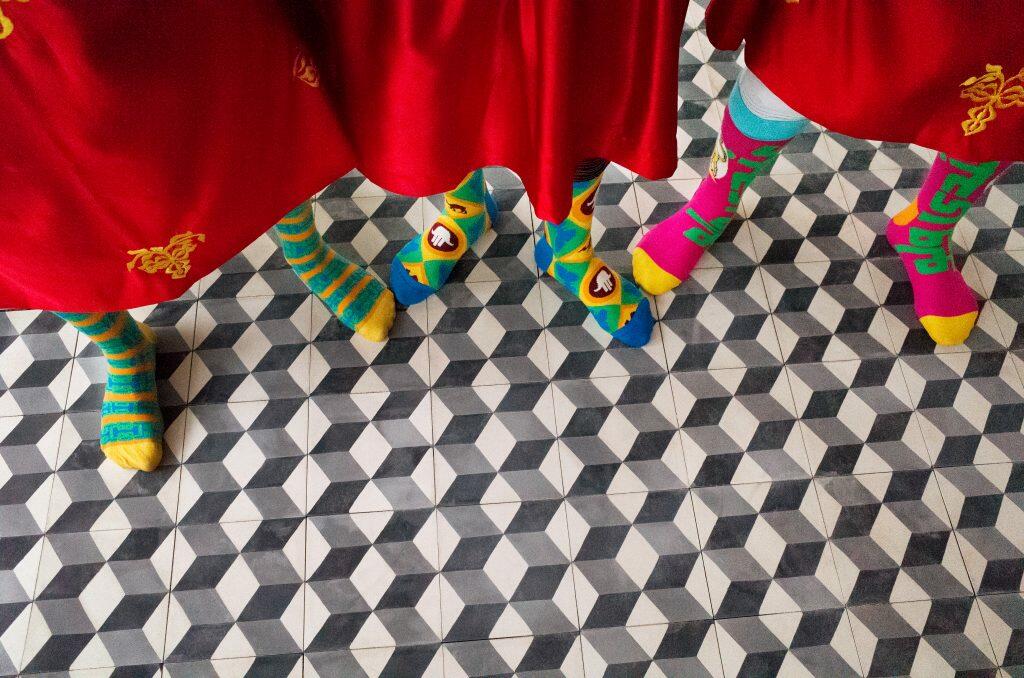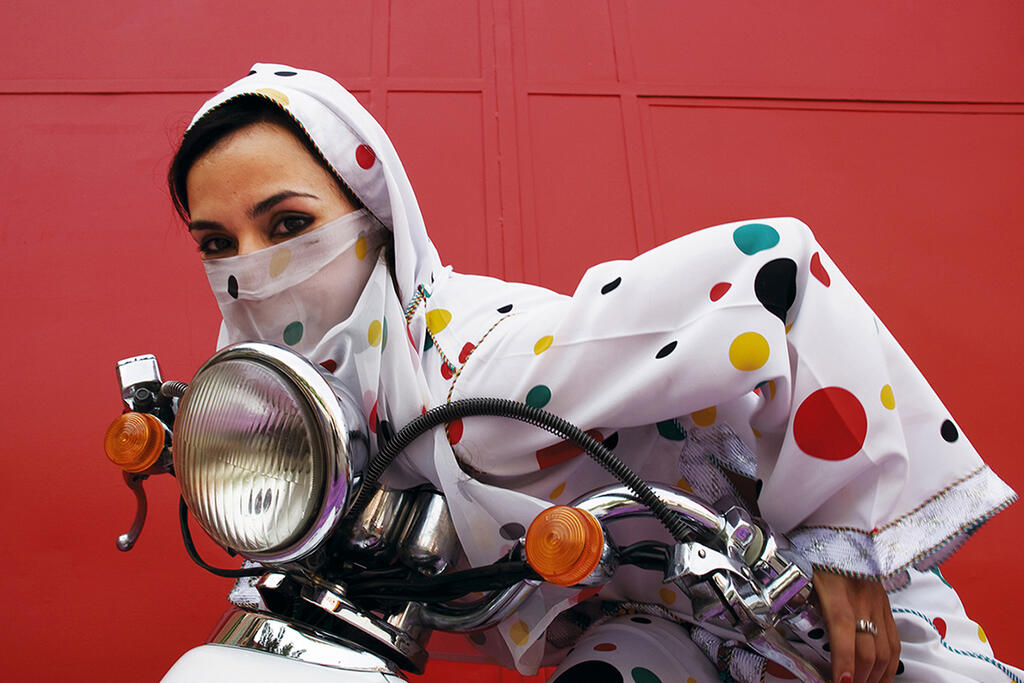"Straight Outta da Medina"
Happy Socks X Andy Wahloo
Offbeat Swedish sock brand Happy Socks has teamed up with Moroccan artist Hassan Hajjaj and his streetwear label, Andy Wahloo Apparel, for a colorful collection celebrating North African culture.
Born in Morocco, raised in London and living between London and Marrakesh these days, Hassan Hajjaj was heavily influenced by the hip hop, reggae and club scenes, as well as by his North African heritage. The incredibly versatile artists oevre imply’s portraiture, installation, performance, fashion, and interior design.
With his colaboration with Happy Socks Hajjaj continues his unique take on the vibrant street culture of Morocco and pays tribute to the youth culture of Marrakesh. We recently had the opportunity to raise a few questions to the artist and photographer about his views on cultural exchange and meaning of this joint...
Explain to me the differences between Marrakesh and elsewhere in Morocco – are there more freedoms in Marrakesh for for expressive culture to form?
Marrakesh is one of those cities that has something—from its light, tradition and culture to Old Medina where old meets new. Marrakesh has produced some of the best poets, musicians, writers, painters, comedians, boxers. It’s magical…and has great food. It’s also a place where all buildings have to be built below the height of the Kotubia Mosque. It’s a red city. It’s also a bike city. For me, the people of Marrakesh are special people. Even Moroccan people from other cities come here for holiday so that gives it spark.
At what age did you leave Morocco for London?
I left at age 13 from a town called Larache - I still have most of my family here. I moved back to Marrakesh in the early 90’s. Both a friend who rides a bike and the use of bikes in the city drew me in to do the ‘Kesh Angels’ that I started around ‘97-’98.
The colours explode from the photographs – almost Pop Art in its vibrancy. Is that what you associate with Morocco; brightness, vivaciousness, life itself?
Yes,all that. Also, there is so much pop here in daily life.
Tell me about the “branding” in your early works that provides the frames to the photographs. What is the message? Is it about Moroccans’ relationship with consumerist culture?
I build the frames for the photographs using products or objects I find in markets: cans of Fanta, tins or boxes of chicken stock, etc. This came from when I was growing up in Morocco as many things are recycled to be re-used, and this has somehow come into my work. I wanted to use the repetition of labels in a slightly humorous context, often directly relating to something happening in the photograph, but I also wanted to create a repetitive pattern in the frame to evoke the mosaics of Morocco in a modern context. The graffiti, the graphics, you know, that kind of stuff. For the Happy Socks colab, the patterns of the socks are really the influences of stuff that I grew up with in Morocco from the Medina or the colours of the sea of Morocco, you know, cash in the colours. And also I use a lot of socks in my photography, normally very quiet and fun. So also, that was an inspiration. We did I did a small piece of film that they're going to put out is Fall.
How is the culture scene growing in terms of artwork and creative output in Marrakech?
I mean, before COVID hit Morocco, the last few years the art scene was definitely growing, a lot of the younger generation do some great work. So studios popped up the last, I would say, five seven years. You know, again, there's not enough art spaces, and not enough galleries, materials and not enough education. Nothing has changed in the sense designers are doing their thing. You just know, obviously we are having cash problems, honestly, most of the galleries are shut down, due to COVID. So just yeah, for now, that has been difficult. That's been a little bit tough on the artist financially. But creatively, you know, you can't stop people from being creative, even if it's just mentally. But just to talk about the business side of it, then I think it's been very tough for lots of artists.
How do you feel about the actual sock business?
Many that sells on the market are coming from China, like in the US, you know, not even a dollar each. So by using them for my pictures I want to try to have a product out there with a brand like Happy Socks. They're quite big. It spoke to me more on the commercial side of streetlife, its a new arena for me to test this and see how this works, I'm going through the process of the what comes out at the end of it.
And regarding your mission, how would you sum it up? Would you say you want to bring the cultural elements to to our Western world? Would you call yourself a cultural ambassador?
You know, I've been doing it for 30 years. It's about people. And it's not just Morocco. It's about putting people together in one set. I'll continue to come from all over the world to become as one, as one body of people attending a my show. So really, this is the idea. It's about sharing culture. Morocco is different from the work I do in London and different types of people attend, it's a journey of my life. I was born in Morocco and grew up in London.That's what's around me, what influences me, that kind of people differnent people inside of me.
I'm just an artist. You know, people see that it's great and I'll take that as opposed to something political. If people see something political that's great. I'll take that, but I not do anything politically in my work or if somebody sees religion in that, that's great, but I would say that I'm not doing any religious work. I'm just trying to do what I can play out in front of people, let the people decide when they see in the work and how they perceive it and how these folks see it in their own ways. You can put 10 different people in the same picture and maybe 10 people have different points of view in the same image. And that's really the publis decision, if they like it or not. You can create a debate or enough for them to just think about something.







